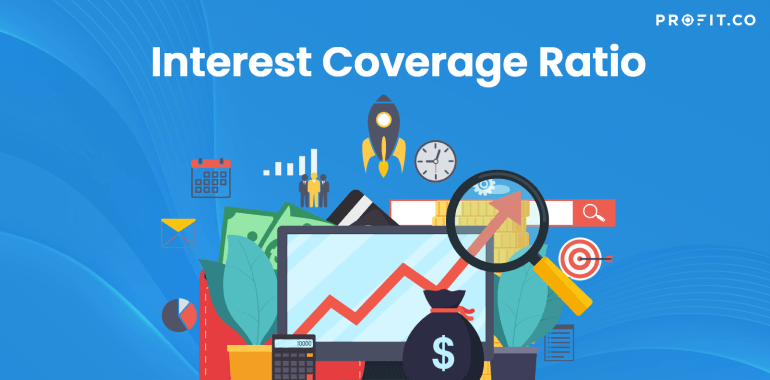The financial ratio known as interest coverage ratio determines whether a company is able to make interest payments on its debt or not and that done in a timely manner. Also a liquidity ratio, it does not refer to a company’s ability to make principle payments on a debt – when compared to the debt service coverage ratio.
When the interest coverage ratio is calculated, the investors and creditors can have a good look at the risk and profitability of a certain company.
How the interest Coverage Ratio Works
For example, an investor would like to see the value of his investment in a certain company increase. As this ratio is mainly based on operational efficiencies and profits, an investor is very happy to see that the company they have invested in is able to pay off its bills on time.
Of course, a company shouldn’t have to sacrifice any of its profit or operations when paying off its debt as the investors won’t see this with good eyes, so to say – this means that the company comes with a certain risk for them.
On the other hand, a creditor will use the interest coverage ratio to see if the company could handle any additional debt – for example, a sum they are going to borrow. For example, if the company just can’t pay the interest on its debt, it means that principle payments are entirely out of the discussion.
Naturally, a creditor won’t lend money to a company that has a hard time paying off the interest on its debt – this means that there’s a risk the company will have a harder time paying back the amount it has borrowed.
The Formula
The interest coverage ratio is the result of a simple division. For one to round it up, all that has to be done is to take the earnings before interest and taxes (EBIT) and divide them by the interest expense. This formula doesn’t take net income into account as creditors and investors – and not only – want to see how much a certain company is able to pay in interest. If we were to take only the net income in this formula, then the interest expense would be counted twice, while the tax expense would just change based on the interest that’s being deducted – in short, the equation would make no sense.
Furthermore, any interest period can be calculated using this formula. All you have to do is divide the earnings before interest and taxes (EBIT) and the interest expense by the number of months you want to get your result for.
Conclusion
Even though it is a financial ratio, the interest coverage ratio doesn’t mean everything for an investor or creditor. It also depends on how risky they want to play the game, so to say.
While the basics of this ratio don’t change, the risk limits of certain financial entities, so to call them, might be different – therefore, they might be comfortable in lending to or investing in a certain company even if the interest coverage ratio doesn’t look that good.
